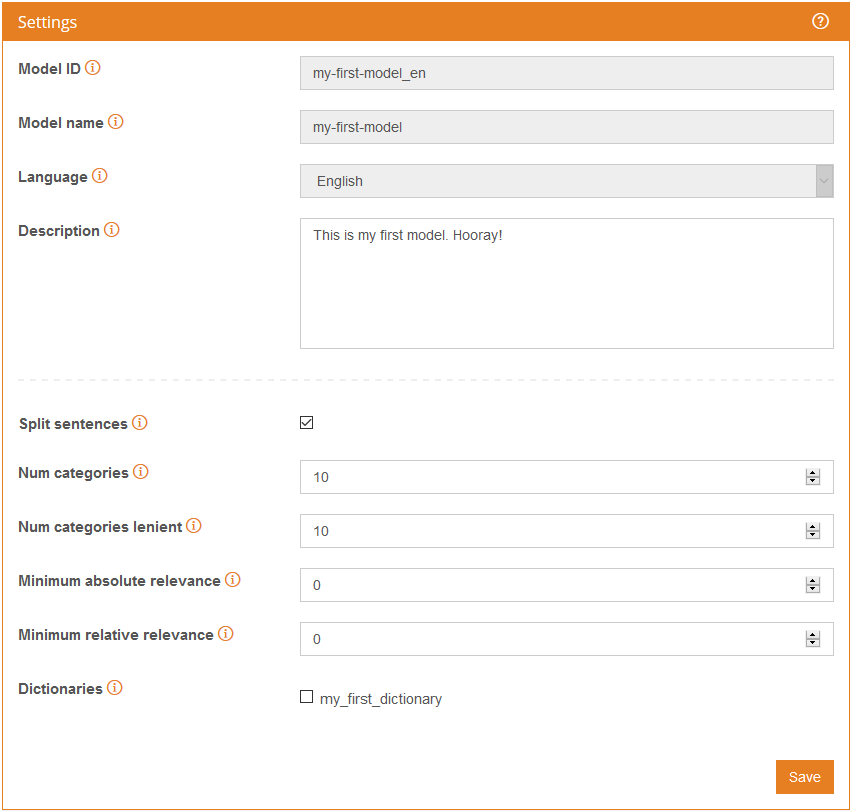Settings
In this window you will be able to modify the generic settings of a model. There are two sections: the first one is related to the model’s general settings, and the second one enables the modification of categorization settings.

Model settings
- ID: ID of the model, how we univocally identify it. It's formed using the name and the language of the model and cannot be edited. It's what we will use to refer to it when we use it from an application.
- Model name: The name of the model is how it will be listed in the resources section and how it will be referred to when categorizing a text. It is limited to 64 characters, and can only contain alphanumeric characters, dashes and underscores. It cannot be edited.
- Language: Language of the model. It cannot be edited.
- Description: A brief description of the model. It is limited to 255 characters.
Categorization settings
- Split sentences: It indicates whether to split the text into sentences or just consider the whole text as one unique "sentence". This will have a high impact on rules that are context-dependent.
- Number of categories: Determines the first 'n' categories by relevance to show in the results. For example, if the ‘n’ (number of categories) is 3 and the text is classified into 5 categories, the output will only show the three categories with higher relevance. By default 10 categories are shown.
- Number of categories lenient: Determines the first 'n' categories by relevance (with different relevance values) to be output in the results. For example, if the ‘n’ (number of categories lenient) is 3 and relevance for the fourth category is equal to that of the third one, the output will include the first four categories, as a result. By default 10 categories are shown.
- Minimum absolute relevance: Limits the absolute relevance value necessary to include a category in the output. By default it's set to 0.
- Minimum relative relevance: Limits the relative relevance value necessary to include a category in the output.
The default value is 0. See an example of the filtering in the table below, according to different values of the parameter:
Category Absolute relevance Relative relevance Threshold = 0.3 Threshold = 0.51 Category 1 4 = 4/4 = 1 Category 2 2 = 2/4 = 0.5 Category 3 1 = 1/4 = 0.25 - Dictionaries: Selection of the user dictionary IDs that this model will use.

